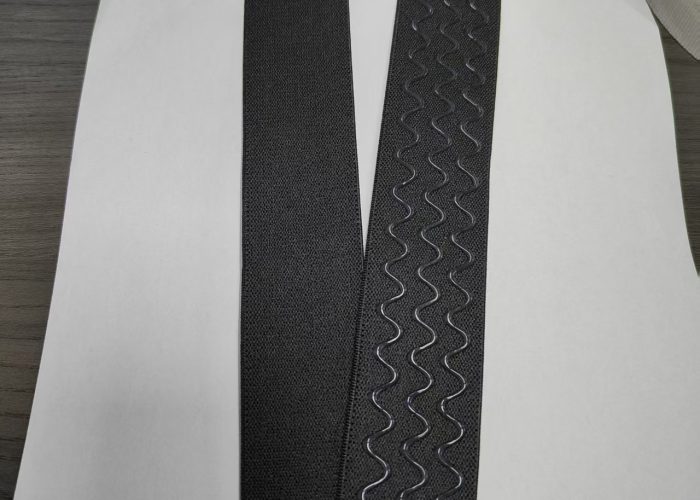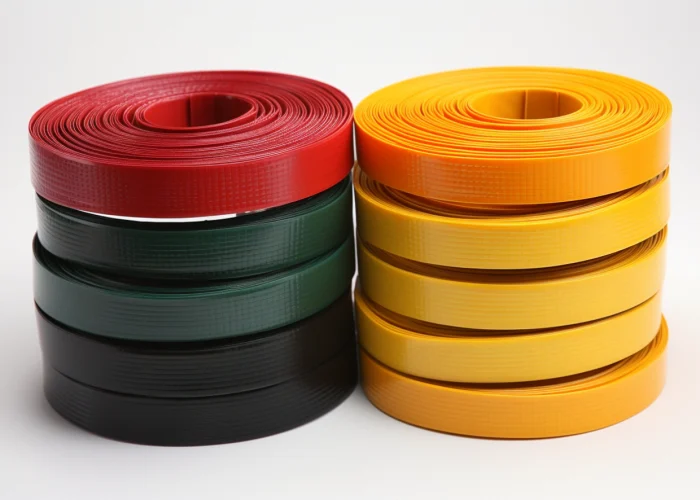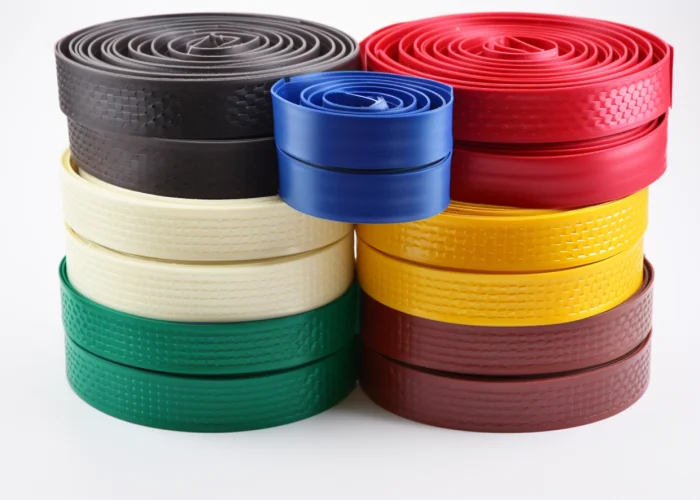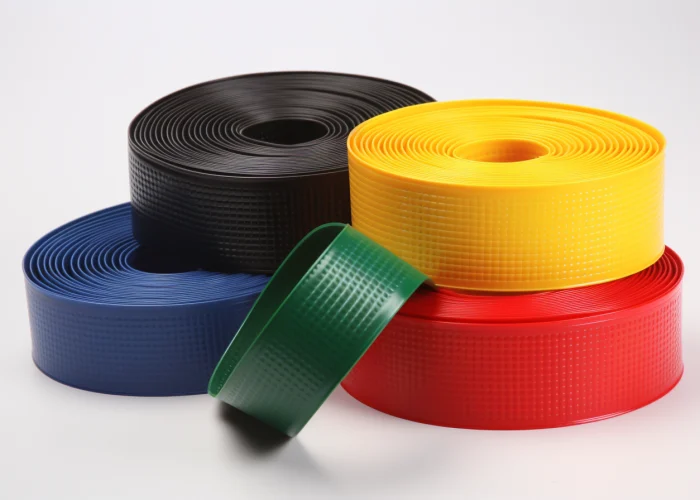Selecting the right combination of base webbing material and non-slip treatment directly impacts product safety and performance across industries from medical restraints to outdoor equipment. Our manufacturing expertise enables us to engineer custom non-slip solutions optimized for your specific application requirements and environmental conditions.
To make webbing non-slip, apply friction-enhancing coatings, integrate rubber strips during weaving, texture the surface, or use specialized fabrication techniques.
Explore key manufacturing methods, material performance, and applications to find the best non-slip webbing solution for your grip and environmental needs.


Webbing manufacturing expert with 15+ years of experience helping product developers build high-performance straps for industrial, medical, and outdoor use.
The main non-slip webbing options are friction-enhancing coatings (PVC, silicone, TPU, rubber), rubber strip integration, surface texturing through weave patterns or backing, anti-slip composition layering, and specialized fabrication techniques like extrusion and bonding.
Quick Overview:
OSHA recommends a coefficient of friction (COF) of 0.5 for proper slip resistance, while standard uncoated webbing achieves 0.3-0.4. Friction-enhancing coatings are applied through dipping, spraying, or calendering during manufacturing. Aggressive bumpy grip patterns in PVC coatings provide high slip resistance even when wet.
Rubber strip integration occurs during weaving, permanently embedding non-slip elements that cannot delaminate. Surface texturing increases contact area through specialized weave patterns or applied backing materials.
ASTM D6775 provides the standard test method for determining breaking strength and elongation of textile webbing, ensuring safety compliance across all methods.
Design Takeaway: Choose coatings for versatility and cost-effectiveness, integration for permanence, texturing for increased contact, and specialized fabrication for custom grip
PVC coatings provide excellent grip on dry surfaces but lose effectiveness when wet, while silicone coatings offer consistent performance across all conditions and extreme temperatures, though at a higher cost.
Quick Overview:
Performance Comparison: PVC coated webbing offers cost-effective performance and flexibility, making it suitable for budget-friendly projects. ASTM D1894 testing protocols measure static and kinetic friction properties under controlled conditions, providing standardized grip measurements for coated webbing materials.
Silicone has natural lubricity and lower coefficient of friction compared to rubber materials, but maintains consistent performance regardless of conditions. Traditional PVC has a maximum operating temperature around 60°C when heat distortion begins to occur, while silicone non-slip webbing for safety equipment maintains performance from -60°C to 250°C.
Material Benefits:
Property PVC Coating Silicone Coating
Dry Grip Performance (ASTM D1894) Excellent (COF 0.5–0.6) Good (COF 0.4–0.5)
Wet Grip Performance Poor (drops 30–40%) Consistent (maintains 85–90%)
Temperature Range (ASTM D2000) Normal use (-10°C to 60°C) Extreme conditions (-60°C to 250°C)
Cost Budget-friendly Premium pricing
Food Safety (FDA 21 CFR 177.2600) Not food-grade FDA approved
Best Applications Indoor, dry environments Outdoor, food, medical
Design Takeaway: Choose PVC coatings for maximum grip at lowest cost in dry, controlled environments. Select silicone coatings for high-grip textile for industrial use requiring reliable performance in wet conditions, extreme temperatures, or food-contact applications.

Rubber strip integration outperforms surface coatings when you need permanent grip that won’t wear off, making it ideal for high-flex fatigue environments, safety equipment, and applications where coating failure poses risks.
Quick Overview:
When Integration Works Better: These reinforced polymer straps have tensile strength between 500 and 1,000 lbs and will not stretch appreciably, making them perfect for load-bearing applications where grip must remain consistent throughout the product’s life.
Superior Applications:
Key Advantages:
ASTM D6770 hex bar abrasion testing measures webbing resistance to wear, while ASTM D751 coating adhesion testing validates that integrated strips maintain performance where surface coatings fail over time.
Feature Surface Coatings Rubber Strip Integration
Durability (ASTM D6770) Wears off over time Permanent, built-in
Flexibility (ASTM D751) Can crack with bending Flexes with webbing
Manufacturing Cost Lower initial cost Higher upfront investment
Service Life 1–3 years typical 5–10+ years
Maintenance May need recoating No maintenance required
Failure Mode Peeling, cracking Webbing failure only
Best For Light-duty, temporary Heavy-duty, permanent
Design Takeaway: Use rubber strip integration for coated vs integrated grip systems for webbing requiring long-term reliability, especially safety equipment, heavy-use applications, or environments where coating failure could cause problems.
Deeper textures provide better grip performance: shallow textures work for light handling, medium textures meet industrial safety standards, and deep aggressive patterns deliver maximum slip resistance for safety-critical applications.
Quick Overview:
Texture Performance: Aggressive bumpy grip patterns with thick 1/4″ coatings have big hemispheric shaped dots molded onto the surface that create friction when contacting many surfaces. These large domed grip nodes provide maximum slip resistance even in challenging conditions.
Pattern Design Options:
OSHA recommends a coefficient of friction of 0.5 for proper slip resistance. Medium textures easily exceed this requirement under ASTM D1894 test conditions, while deep textures provide extra safety margin for critical applications.
Manufacturing Options:
Attribute Shallow Medium Deep
COF Range (Dry/Wet) 0.45–0.50 0.55–0.70 0.70–0.95+
OSHA Compliance Meets minimum (0.5) Exceeds standard Maximum safety
Manufacturing Complexity Simple Moderate Complex
Test Standards Basic grip testing ASTM D6770 abrasion Full safety certification
Design Takeaway: Select shallow textures for cost-effective general use, medium textures for non-slip webbing for safety equipment requiring OSHA compliance, and deep aggressive patterns for maximum grip in safety-critical or wet environments where exceeding industry standards is essential.

Silicone coatings resist the widest temperature range (-60°C to 250°C) and provide excellent water resistance, while TPU coatings offer good flexibility and water resistance up to 80°C, making both superior to PVC for extreme conditions.
Silicone maintains performance at extreme temperatures while TPU starts melting at 80°C, making material selection critical for environmental exposure. Flexible PVC has a broad operating temperature range and resistance to sunlight, abrasion, oils, and chemicals, though performance degrades in harsh conditions.
Water Resistance Performance: Silicone coated webbing provides high heat resistance, extreme flexibility, and chemical resistance for demanding applications. TPU maintains flexibility when exposed to moisture, making both materials suitable for outdoor applications requiring consistent grip performance.
Environmental Applications:
Design Takeaway: Choose silicone for maximum environmental resistance across all conditions, TPU for outdoor applications requiring flexibility, and upgraded PVC formulations only for mild environmental exposure where cost is the primary concern.
Key standards for safety equipment non-slip webbing include ASTM D6775 for breaking strength, ASTM D6770 for abrasion resistance, ANSI Z359.13 for fall protection, and EN 355 for energy absorption, plus industry-specific requirements.
Fall Protection Standards: Dynamic webbing testing encompasses comprehensive energy-absorbing testing standards, including ASSP/ANSI Z359.13, CSA Z259.11-17, EN 355, ABNT NBR 14629, and AS/NZS 1891. These standards specify performance requirements for safety-critical applications.
Structural Requirements: Webbing must demonstrate adequate breaking strength, elongation limits, and dimensional stability under load. Testing protocols verify compliance with applicable safety requirements before equipment certification.
Additional Compliance Areas:
Design Takeaway: Identify all applicable safety standards early in development, budget for comprehensive testing, and work with certified testing facilities to ensure full compliance before market introduction.

Test non-slip performance using ASTM D1894 coefficient of friction measurement, ASTM D6770 abrasion testing, real-world application trials, and accelerated durability testing under wet, dry, and contaminated conditions.
Laboratory Testing: ASTM D1894 and ISO 8295 are international standards for determining the coefficient of friction of plastic films and coatings. Testing includes dry, wet, and contaminated surface conditions to establish baseline performance data.
Application Validation: Real-world testing with target applications provides practical performance feedback. User evaluation includes grip effectiveness during handling, tactile feedback quality, and performance under actual operating conditions.
Durability Assessment: ASTM D6770 hex bar abrasion testing measures webbing resistance to wear expressed as percentage of retained breaking strength. Testing protocols validate grip retention through repeated use cycles.
Production Criteria:
Design Takeaway: Implement comprehensive testing protocols early in development, validate performance under actual use conditions, and establish clear acceptance criteria before committing to full production to ensure market success.
Non-slip webbing selection depends on application requirements: PVC for cost-effective indoor use, silicone for extreme conditions, rubber integration for permanent grip, and appropriate texture depth for safety compliance. Each method offers distinct performance advantages for specific environments and durability needs. Contact us to explore manufacturing solutions tailored to your non-slip webbing requirements.
Yes, silicone and TPU coatings maintain consistent grip in rain, snow, and temperature changes. Silicone works from -60°C to 250°C, making it ideal for outdoor gear, camping equipment, and sports accessories.
Quality coatings won’t peel when properly applied. However, rubber strip integration eliminates peeling risk entirely – recommended for high-use products like backpacks, tool belts, or safety equipment.
Light handling products need basic texture, outdoor gear requires medium grip, and safety equipment needs maximum grip levels. We can recommend optimal solutions based on your specific product application and user requirements.
Yes, all coating types accept custom color matching to your brand palette. Silicone offers the widest color range and maintains color stability longer than PVC or TPU options.
PVC offers the strongest grip at lowest cost for indoor products. TPU provides good outdoor performance at moderate pricing. Silicone delivers premium performance but costs 40-60% more – best for high-end products.
Our minimum order quantity is 1000 meters for custom non-slip webbing. This allows us to maintain cost efficiency while providing high-quality custom solutions for your specific product requirements.